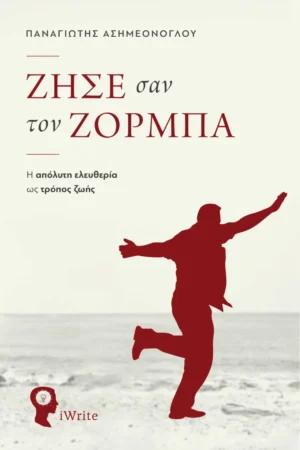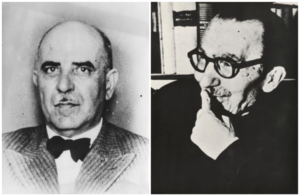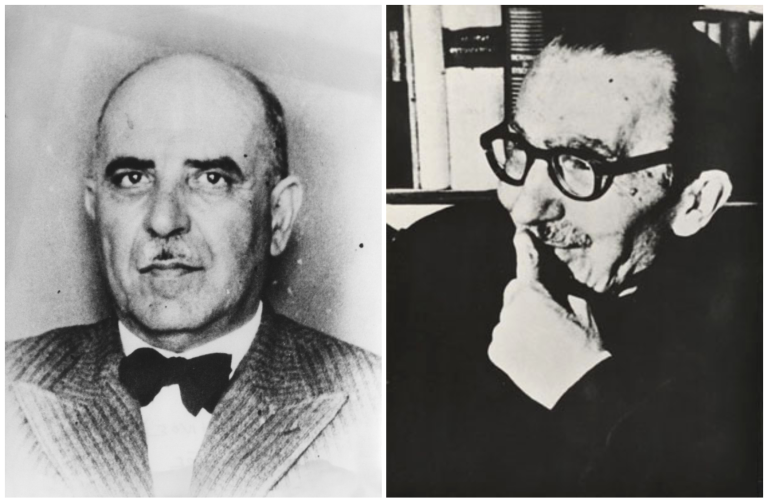What does "Live like Zorba" mean?
A few months before he passed away, Nikos Kazantzakis received a letter from his eldest son Giorgis Zorbas, Andreas. The young Zorbas protested strongly, because he believed that the book of the Cretan author "Life and State of Alexis Zorbas" defamed his father and insulted his family. Kazantzakis answered him:
"Rarely have I loved and honored a man like Zorba. I presented him in my writings as a superior free man and he is now glorious to thousands of people in Europe and America... I did this for the father and now the son is complaining".
The gap that exists between the real and the fictional Zorbas was confirmed in an interview by Markos Augeris, friend of George Zorbas and second husband of Galatea Kazantzakis: "No one knew Alexis Zorbas. He is a creature of Kazantzakis' imagination and has almost nothing to do with the Zorbas of life, who once met him as a friend of Kazantzakis, around 1920 [...] This Zorbas had nothing of the vagabond and furious nature of her Zorbas art".
As the writer and scholar, Panagiotis Asimeonoglou reports, the question of whether and to what extent the literary portrait of Zorba coincides with his real life has occupied many readers and scholars.
"It is true that the fictional Zorbas is an exaggeration. His incessant euphoria, his childlike enthusiasm, his impetuosity and his irrational passion make him seem abnormal. However, these are the characteristics that turn him into an attractive personality, popular and rich in experiences [...] Zorbas the real one, who reminds us of a distant grandfather and the fictional one, who looks like the teacher we all would like to have , is a compass that is attracted by the essence of life and thus shows us the limits of our journey", concludes Mr. Asimeonoglou in his new book "Live like Zorba – Absolute freedom as a way of life”, published by iWrite publications.

His book "Live Like Zorba - Absolute Freedom as a Way of Life" is published by iWrite.
The timeless value of Alexis Zorba
The novel "Life and State of Alexis Zorba" is the most popular work of Nikos Kazantzakis. It was written during the Occupation, was released in May 1946, was transferred to the "big screen" in 1968 and is among the landmark books of Greek and world literature. Kazantzakis was inspired by the story by George Zorbas, whom he met on a tour of Mount Athos, where I stayed together for many weeks and they made plans for joint business action. In the novel, George is renamed Alexis and the narrator hires him as the foreman of his coal mine, having been impressed by his unconventional character.
In Crete, the two men settle in the hotel of Madame Hortens, a luxury prostitute, who soon becomes Zorba's mistress. It soon turns out that the coal mine was a sham. The narrator is not interested in profits and business, but is looking for answers to the philosophical questions that tyrannize him.
With simple logic and the experience of his troubled life, Zorbas shows him that the answers are not found in books, but come from life. It is enough to live it with passion, to enjoy the "now", freed from hopes and expectations.

Zorbas and Kazantzakis.
Zorbas of Kazantzakis loves food, singing, women, friendship, conversations and good times. In other words, he personifies the Berksonian idea of "animal drive".
Mr. Asimeonoglou's new book attempts to highlight this exuberant personality. The main question that runs through it is: to what extent does Kazantzakis' hero function as a role model for the 21st century reader?
Having delved into the writings of Kazantzakis for years, Mr. Asimeonoglou expresses the opinion that his novel "is a poetic and philosophical work, which could comfortably compete with many classics of these genres".
In its first chapter "Live like Zorba", tells the story of Kazantzakis-Zorba's acquaintance and the latter's life. In the second section, he analyzes the aspects of Zorba's character and poses the existential questions that flow through the pages of the novel and remain timeless.
In the third part of his short and easy-to-read book, he examines whether the words of "Zorba" can be transformed into action for life. At the same time, he invites the reader to reflect on the questions that emerge through "Zorba".
In the prologue of the novel, Kazantzakis admits that Zorbas was the man who taught him to love life and not to fear death. It taught him that before one dies, one must live one's existence to the fullest, risk and fall in love, laugh and dance, sweat and fight.
Panagiotis Asimeonoglou cites in his poem an interpretation of how Zorbas "exorcised" the fear of death and always kept the life force active within him:
"Instead of looking for a detour, ideological or religious, that would give him illusions of security, he chose to face death at every moment. This means that he lived as if he were constantly dying to the past, to the attachments of the past, to his lost memories, to the experiences that had passed forever."
But what does it mean to live like Zorba? The specific question was answered by its creator himself. At the end of the book, Kazantzakis shows that the "boss" did not become like Zorba, i.e. a greedy and capricious man, but he learned to live his life like Zorba, i.e. assimilating his energy, in order to become more himself.
The "Live like Zorba", therefore, it does not mean to imitate his behaviors nor to necessarily adopt his views, but, learning from his history, to "carve" our own "path" towards joy, freedom and authenticity.
"Zorbas can become our launch pad for 'something more' or something 'more real', which we have now lost in our daily routine […] Learning to exist/be like Zorbas is one of the most important things that we have to do in our unique life", concludes Mr. Asimeonoglou.
You can read more about the emblematic work of Nikos Kazantzakis in the book "Live like Zorba – Absolute freedom as a way of life” published by iWrite publications.
Main photo image source: Kazantzakis Museum Archive.

